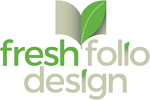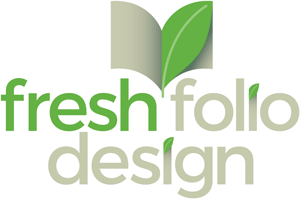Regularly, in this blog we talk about the value of print brochures. When done well, we believe it is an effective tool that has the power to influence your audience.
However, we don’t advocate doing print solely for the sake of print. There are plenty of ways that the technological evolution has reduced, or eliminated, the ways print is used. (I’m looking at you phonebooks and roadmaps.)
However, we still believe in print enough to write about the value of it every week and share examples of how brochures have solved companies’ marketing issues.
So what’s the difference between a brochure that is an engaging tool versus one that’s a waste of resources?
What IS the secret sauce? The answer is design.
A well-designed brochure isn’t just pretty pictures with a lot of color on glossy paper, it uses elements of type, color, and graphics to solve problems and correspondingly engage readers in a way that a poorly-designed brochure simply can’t.
In light of that, we have decided to focus our next set of blog posts squarely on design. Over the next few weeks, we are going to talk about visual hierarchy, composition, typography, and color.
We are also going to share what we know about paper, binding, and finishing options for printing, as well as helpful information on color correcting photos. We want to share what we know because we believe that everyone gets better when information is shared.
So, now that we have set the course for the direction of the blog, we wanted to finish up this post with Rebecca sharing a recent experience that illustrates the impact of a well-designed printed piece.
Design Makes the Difference
Last month I received a brochure in the mail from Target. This is a company that has demonstrated that they value good design, so I briefly flipped through the brochure, enjoying the visuals, but determined there wasn’t anything that I currently needed.
Even though we were heading into the holiday season, I had already completed a good portion of my shopping online. (Thanks, Amazon Prime!)
However, unlike some other mailers that I had received, I didn’t toss this one into the recycling bin. Instead, it remained on the counter, even though I already determined that I had no need for it.
Over the next few weeks, each time I would pick it up with the intention of clearing out some of the clutter, I continued to hold on to it.
One time it was the clever photography, another time it was the strong use of color that caught my eye. There was even one time that I picked it up, headed to the recycling bin, but the feel of the paper caused me to stop and reconsider.
If it had been like so many other brochures, it never would have lasted more than a moment in my hand.
To be clear, I wasn’t responding to this piece as a designer. I was reacting as a consumer to a mailer that had crossed my path.
After a few weeks of the back-and-forth dance between my kitchen counter and the recycling bin, I put on my “designer hat” to assess what was going on. After spending a little time looking at it, I believe it was the fact that it was well-designed brochure which impacted my decision to hold on to it.
Ultimately, I decided to use the coupon at the back of the brochure and went to Target when I made my final purchases for the holiday. As I was finishing my shopping, I realized how my decisions as a customer had been influenced by that brochure.
Which makes me even more excited to share this upcoming information about design. I really do believe that strong design and quality print can make a difference, while print just for the sake of doing print isn’t worth the paper it’s printed on.




Corinne
This article was interesting. I also hang on to quality brochures because they seem valuable and make me feel like they should stay for a while. I thought it was just the designer in me causing this reaction but I think quality brochures affect most consumers in the same way. For me, if the brochure is poor design and quality, I feel the product must be the same and I don’t hesitate to toss it.
Thanks for sharing!
Rebecca Gallagher
Thanks Corinne, I appreciate your comment! Your observation of poor design equating with poor quality of a product is the case for so many people. Most likely, that impression happens on a subconscious level. People would probably not even think about it, but the brochure would fail to do the job of grabbing the reader’s attention and compelling them to take any action. The companies who understand the value good design provides and the positive narrative that results (good design=quality product/company) are the ones who will succeed long term.
Actually, I believe the internet age helped us up our game as print designers, rather than causing us to throw in the towel. It’s easy to say “print is dead” and insist that digital is the only way to go, when in reality we just need to be more strategic in how we use print.